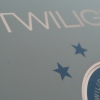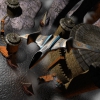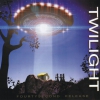Twilight Menu Data Files
by TLHacker
1.Intro
The TL-menu gets its menu data from data files. These files contain
all the data for every program of all twilights. In the past these file
were in the menu directory , but now they have included them in the
.exe file itself as resource data. For every TL there are three files.
A file for the games, further one for the applications and also one for
the various section. The files on the latests TL's are also compressed
in the ZLib format. After decompression you must convert the files from
OEM format to standard ASCII (txt) files. The data for the programs in
the files are described in sequential order ( the game on top of the
list in the menu ) appeared first in the data file.
2.Data File Contents
Here is a part of a Data file as example:
NAME:Pacman
PUBL:Micro$oft
SIZE:48
MEM :32
CODE:PACM
OS :WIN9X
RAR :PACMAN.RAR
SHRT:PACMAN.EXE
DESC:
Once another pacman clone.
This was one really rox!!
<END>
NAME:Racing Madness
PUBL:Ubisoft
(etc...)
The first thing you see in this example is the name of the game
(Pacman). ALL the data under a NAME: specifier until the next
NAME: specifier belong to the same program. So the publisher from
Pacman in this case is Microsoft and the publisher for Racing Madness
is Ubisoft. Further Pacman is 48 MB in size and it requires Windows 9x
and 32 MB of RAM. After clicking on the install button in the menu the
file PACMAN.RAR located in the GAMES directory will be unpacked. After
that a shortcut will be created in the start menu with the name 'Pacman'
Here is a list of all data specifiers in the menu and its description:
NAME: Specifies the name of a program, displayed in the menu listbox
PUBL: Specifies the name of the publisher, displayed as info in the name
SIZE: Specifies the unpacked size of the program in MB's. So the
menu can check if there's enough room to install the game on HD
MEM : the ammount of RAM required for the program , just as info
CODE: The name of the GIF file in the menupics displayed when you click
on the name of the program in the menu. The name must be given
without the file extension. The GIF files in the menupics
directory are renamed to .001, 002, 003 and etc.. so for Pacman
there is a file called PACM.001. If there's also a file called
PACM.002 then you can cycle between these two pictures in the menu
with the cycle button
OS : Specifies the OS required for the program , just info.
RAR : A name of a rar file wich is unpacked after clicking on the
installation button
SHRT: Specifies to wich file a shortcut should be created after
installation
DESC: You can place any piece of text here, describing the program
this text is printed in the program info box in the menu.
Because the DESC: specifier can be longer as one line, you must
end you text by typing <END> ( as in the example)
ZIP : Same as RAR :, but a ZIP file is unpacked instead.
ZIPM: Unpackes a specified zip file. Should only be used for various
data file, it enables the user to select a destination for the
zip file.
4. Advanced DESC: Command options
If you want to place text with different types of letters and colors
then you can use a alternative option for the DESC: specifier. You can
write the text in WordPad (chosing you own lettertype etc..) and save
it in the RTF format. Now you can open the RTF file in NotePad and
copy/paste the RTF codes behind the DESC: specifies. Don't forget to
type <END> at the end of the text.
5. TLSL
TwiLight Script Language
You can use TLSL a as alternative or if it is required to apply special
steps in the installation sequence of a program. You can specify a TLSL
sequence by a TLSL: specifier. You must understand a little of
programming languages in order to use TLSL. TLSL has 3 variables.
$t, $s and $d. $t stands for current specified TargetDirectory. $s
stands for the Source Path ( the cdrom). $d stands for the target drive
selected in the TL menu. with this variables you can make all the
installation steps required to install a game. TLSL has therefore a few
methods to do this. Here is a list of some methods:
unrar unpackes a rar file
copy copies a file
run starts a file
explore explorers a file. like a .REG file
If you want to use TLSL then you must look at the data file of different
TL's as example.






